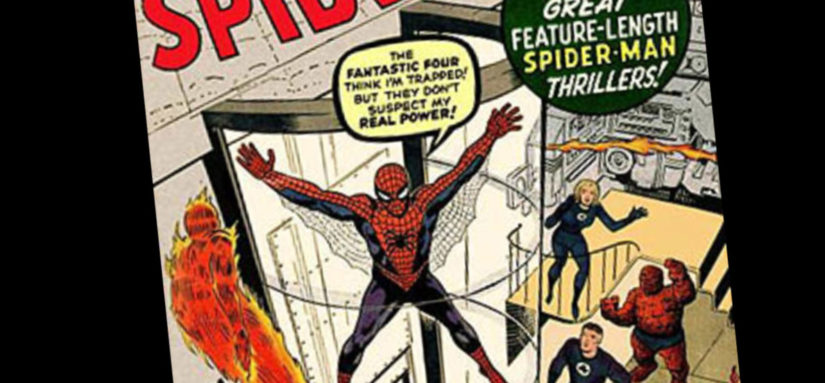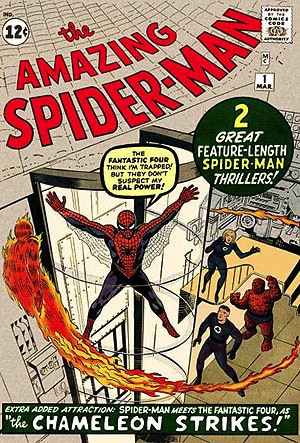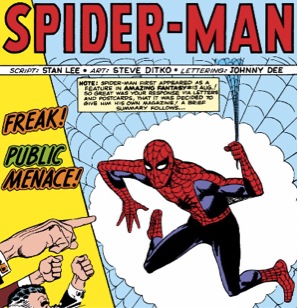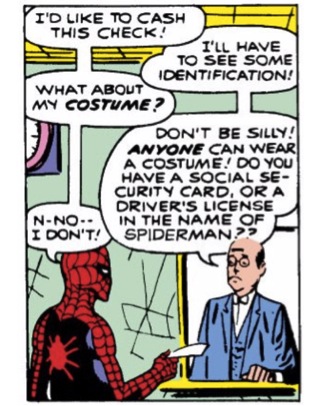I was tempted to break away from the rules of my Marvel Firsts series to instead revisit the Spider-Man’s first appearance in Amazing Fantasy #15, which, while isn’t a #1 of course, features the debut of Marvel’s iconic web-slinger. But since I’ve already read Amazing Fantasy and not the first issue of the first series to pop Spidey’s name right in the title, I figured why not stick to the game!
The Amazing Spider-Man #1 was published in 1963, the year after Spider-Man’s Amazing Fantasy debut. Like the two other Marvel #1s we covered so far – The Avengers and Fantastic Four – this one is written by the man himself, Stan Lee. This time, Stan’s joined by famed Spidey co-creator Steve Ditko on art duties, with Johnny Dee lettering the first story and John Duffi lettering the second. What I found interesting is that Lee and Ditko knew their fans well, right from the start – they didn’t waste needless time retelling Spidey’s origin, instead catching the reader up in the span of about three panels before organically moving into this issue’s story.
Amazing #1 includes two stories – though they’re both billed as full-length, the first one definitely seems to be the main feature. Peter Parker is instantly a sympathetic and interesting character, with Lee and Ditko continuing to define Marvel’s focus on character first and foremost. In Amazing Fantasy, Peter’s Uncle Ben was killed, so now Peter is living with his Aunt May, and the two of them are struggling to make rent. Peter briefly thinks about how easy it would be to use his powers to rob banks, but he dismisses the thought – this is, after all, the character who will learn that with great power comes great responsibility. The thing is, though, I love that Peter had this thought. It’s not a thought that, say, Superman would have, or many other heroes of that time. It’s not a heroic thing to even think about it, but it is very human. How many of us, pressed for cash and in a desperate situation, wouldn’t at least entertain the passing thought if we had powers like Peter? That, right there, that flawed but still honorable nature is what immediately sets Spider-Man apart from the other heroes.
Anyway, Peter decides to get money by performing as Spidey some more, which proves problematic when he tries to cash a check made out to his alias. Oh, the woes of having a secret identity. More trouble comes his way, though, when J. Jonah Jameson takes to the media to make Spider-Man out to be an incredibly nuisance, further complicating Peter’s job hunt. Peter thinks he has it all figured out, though, when he saves Jameson’s son from certain death, but because it wouldn’t be in the spirit of an early Spider-Man story to give the web-slinger a clean win, Jameson just gets angrier at Spider-Man and publishes more nasty articles.
The second story continues Spidey’s adventures, further pinning him as the underdog of the Marvel universe. He’s easy to root for, even if he’s a bit of a jackass in this story, acting on pretty much the worst plan ever concocted. Deciding that he deserves a job with the Fantastic Four, instead of calling them up, he sneaks into the Baxter Building to show the FF just how great he is – by fighting them! The story then takes a left turn into a hero vs. villain blowout as the Chameleon blames a heist on Spider-Man, who isn’t about to let that slide. Chameleon gets caught… kind of due to Spidey’s heroics? It’s another shaky win for Peter, who, in these early stories, is shambling through the hero’s journey – which feels very real.
And that’s the truth of Spidey’s appeal, and why he is as iconic as Superman, the paragon of good, and Batman, the dark avenger sprung from a ruined childhood. Batman and Superman speak to something deep inside of us – our fear, and our ideals. Spider-Man? Spider-Man is us.






Comments are closed.